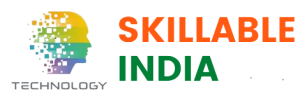PTC Creo Additive Manufacturing

In today’s rapidly evolving technological landscape, additive manufacturing, commonly known as 3D printing, has emerged as a groundbreaking solution for various industries. It has revolutionized traditional manufacturing processes, enabling the creation of complex geometries, customization, and rapid prototyping. PTC Creo, a leading product design and development software suite, offers a comprehensive set of tools and features specifically tailored for additive manufacturing. In this blog post, we will delve into the world of PTC Creo Additive Manufacturing, exploring its capabilities, benefits, and how it enhances the 3D printing workflow.
Career Prospects in PTC Creo Additive Manufacturing
Additive Manufacturing Engineer: As an additive manufacturing engineer, students can work on designing and optimizing parts for additive manufacturing, managing the entire 3D printing workflow, and conducting simulations and analysis to ensure the quality of printed components.
Product Designer: PTC Creo Additive Manufacturing skills open up opportunities for students to work as product designers, specializing in creating innovative designs optimized for additive manufacturing processes. They can leverage the benefits of 3D printing to develop unique products and solutions.
Manufacturing Technologist: Students proficient in PTC Creo Additive Manufacturing can pursue careers as manufacturing technologists, focusing on integrating additive manufacturing into existing manufacturing processes, optimizing production efficiency, and reducing costs.
Research and Development: Additive manufacturing is a rapidly evolving field, and students with expertise in PTC Creo Additive Manufacturing can contribute to research and development efforts. They can explore new materials, technologies, and applications to push the boundaries of additive manufacturing even further.
Understanding PTC Creo Additive Manufacturing
PTC Creo is a robust suite of CAD (Computer-Aided Design) software tools that provides comprehensive support for the entire product development process. The Additive Manufacturing module within PTC Creo is designed to optimize the workflow for additive manufacturing processes, helping users harness the full potential of 3D printing technology.

Key Features of PTC Creo Additive Manufacturing
Design for Additive Manufacturing (DfAM): PTC Creo Additive Manufacturing provides tools to generate lattice structures, optimize part orientation, and create supports. These features enable designers to exploit the benefits of additive manufacturing, such as lightweight designs, improved part performance, and reduced material consumption.
Part Consolidation: With PTC Creo Additive Manufacturing, users can consolidate multiple parts into a single, more complex component. This feature eliminates the need for assembly and fasteners, resulting in reduced weight, increased strength, and improved functionality.
Simulation and Analysis: The software allows users to simulate the additive manufacturing process to identify potential issues, such as thermal deformation or part distortion. By conducting virtual tests, engineers can optimize their designs before the physical printing process, saving time and resources.
Material Management: PTC Creo Additive Manufacturing includes a comprehensive database of materials, allowing designers to select the most suitable materials for their specific applications. This feature ensures compatibility with different 3D printers and helps achieve desired mechanical properties.
Support Structures: Generating effective support structures is crucial for successful additive manufacturing. PTC Creo Additive Manufacturing offers automatic support generation, ensuring proper stability during the printing process while minimizing material waste and post-processing efforts.
File Preparation: The software optimizes the 3D CAD model for additive manufacturing, including features like mesh healing, remeshing, and slicing. These capabilities help create a printer-ready file format, ensuring smooth communication between the design and manufacturing stages.
Benefits of PTC Creo Additive Manufacturing
Improved Design Optimization: PTC Creo’s design tools empower engineers to create complex, lightweight structures that were previously unachievable with traditional manufacturing methods. By leveraging the capabilities of additive manufacturing, designs can be optimized for performance, cost-effectiveness, and material efficiency.
Time and Cost Savings: PTC Creo Additive Manufacturing enables rapid prototyping and iterative design processes, reducing development time and costs. Simulations and virtual tests allow for design improvements before physically printing prototypes, minimizing the need for costly trial and error iterations.
Enhanced Collaboration: PTC Creo facilitates collaboration between designers, engineers, and other stakeholders involved in the product development process. With real-time feedback and shared access to design files, teams can work together seamlessly, improving productivity and reducing errors.
Scalability: PTC Creo supports a wide range of additive manufacturing technologies, including powder bed fusion, material extrusion, and binder jetting. This flexibility allows businesses to adapt their additive manufacturing processes to their evolving needs, from prototyping to low-volume production.
Conclusion
PTC Creo Additive Manufacturing is a powerful toolset that unlocks the full potential of additive manufacturing technology. By integrating design optimization, simulation, and file preparation features, PTC Creo streamlines the 3D printing workflow, enabling users to create innovative, functional, and cost-effective parts. Whether you’re an engineer, designer, or part of a product development team, PTC Creo’s comprehensive suite of tools can help you harness the benefits of additive manufacturing and bring your ideas to life.
Book a Free Demo, now!
Know more about our Engineering courses with Job Assistance!


Learning to Cad Cam